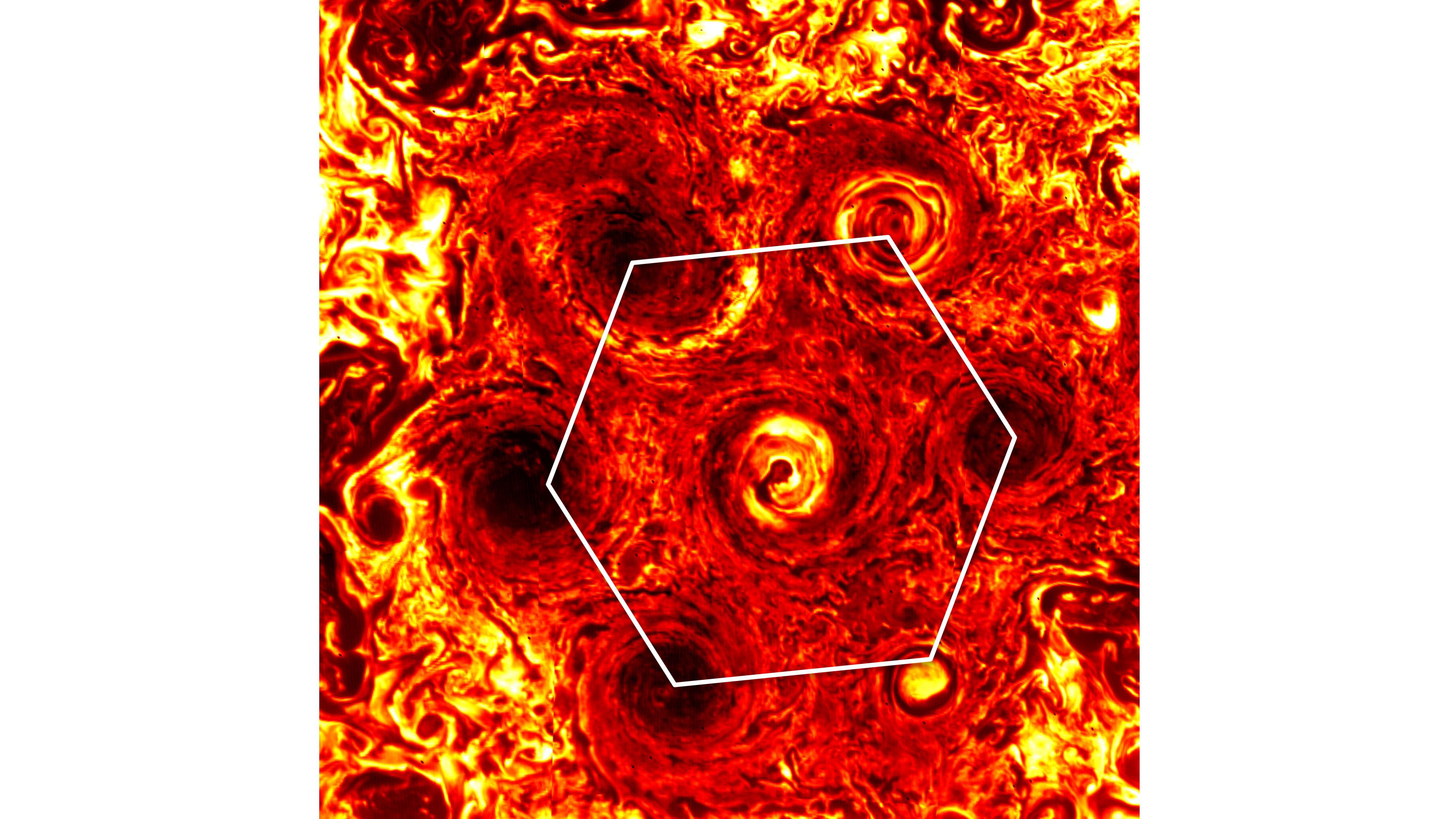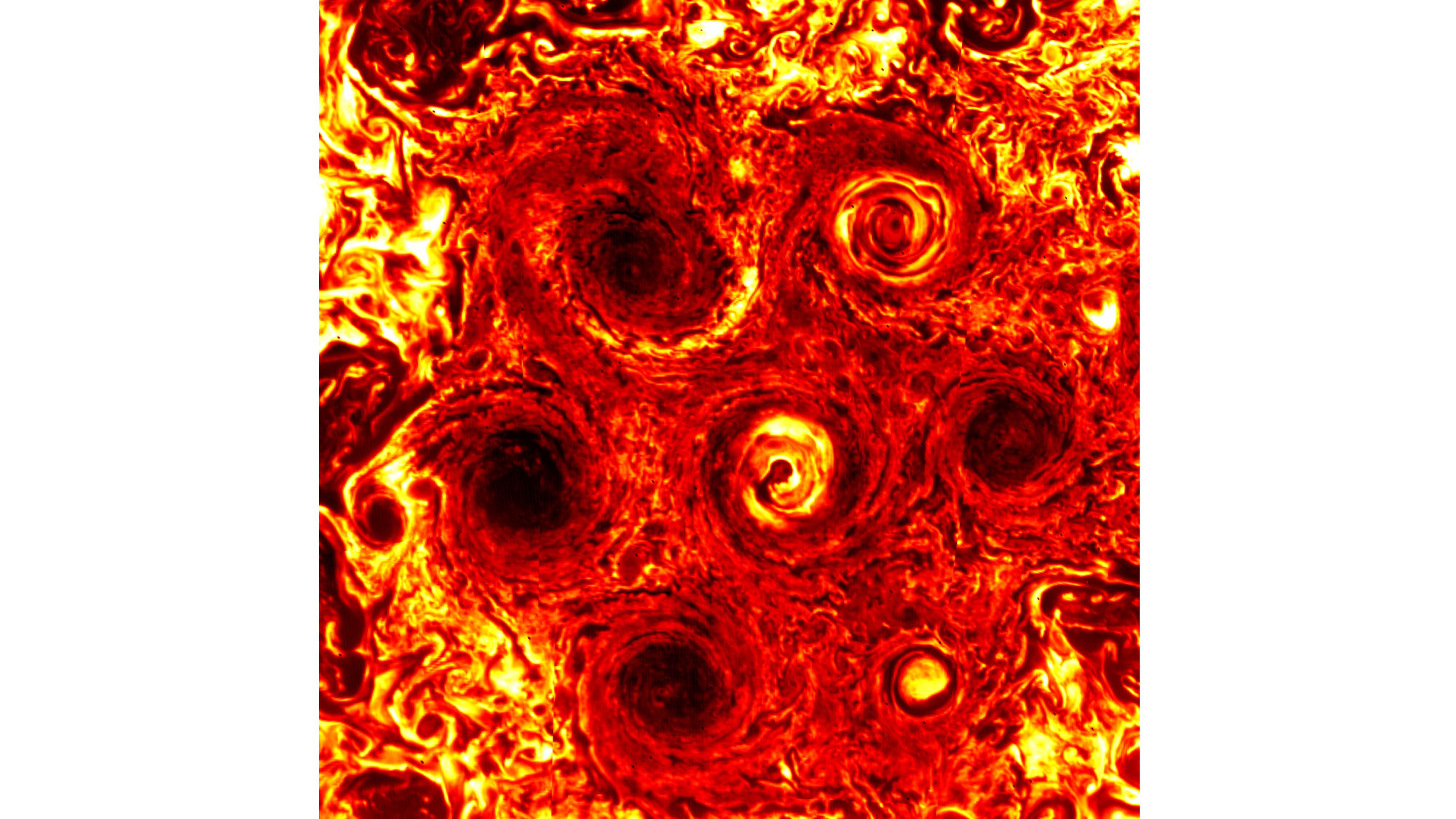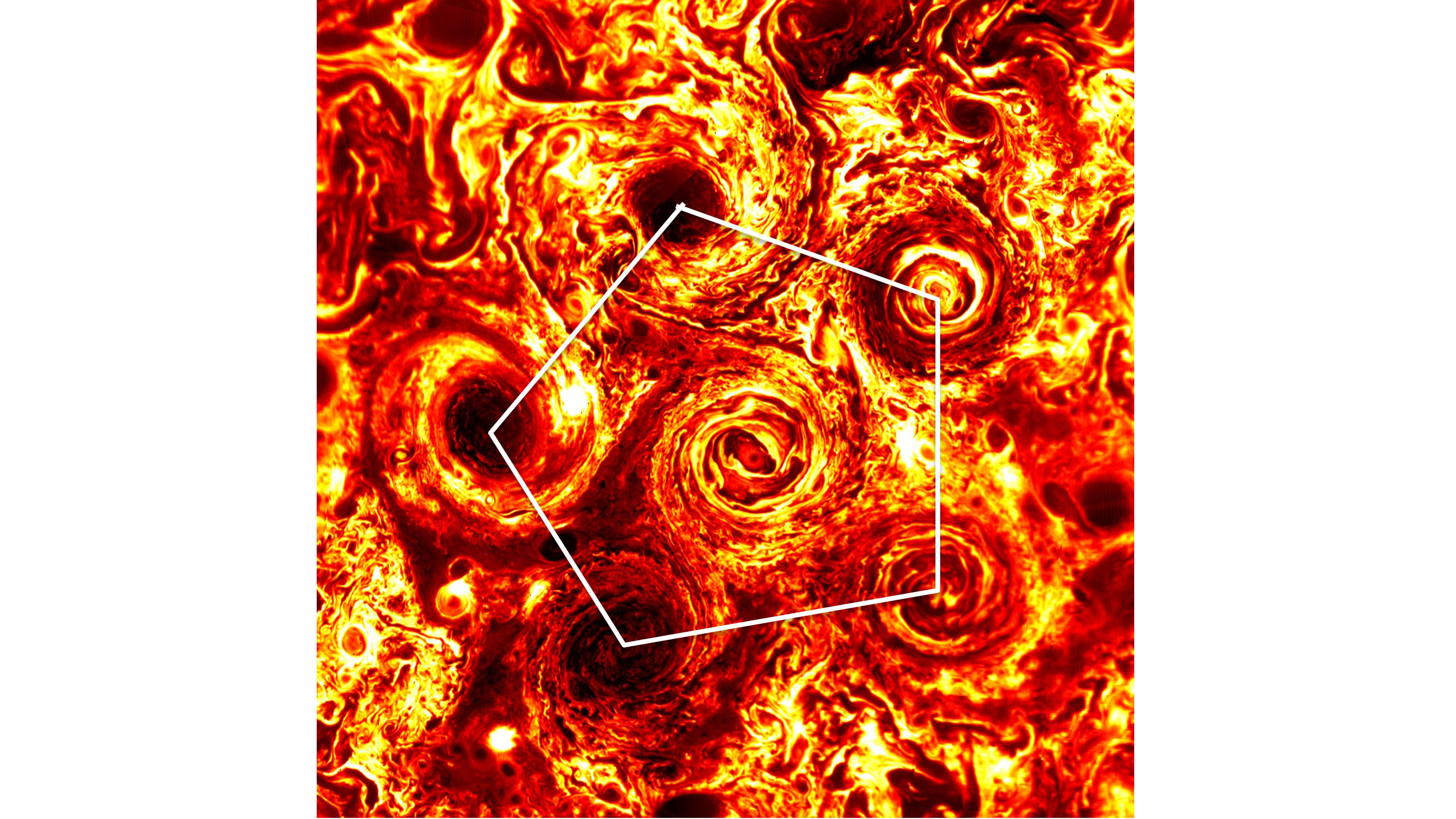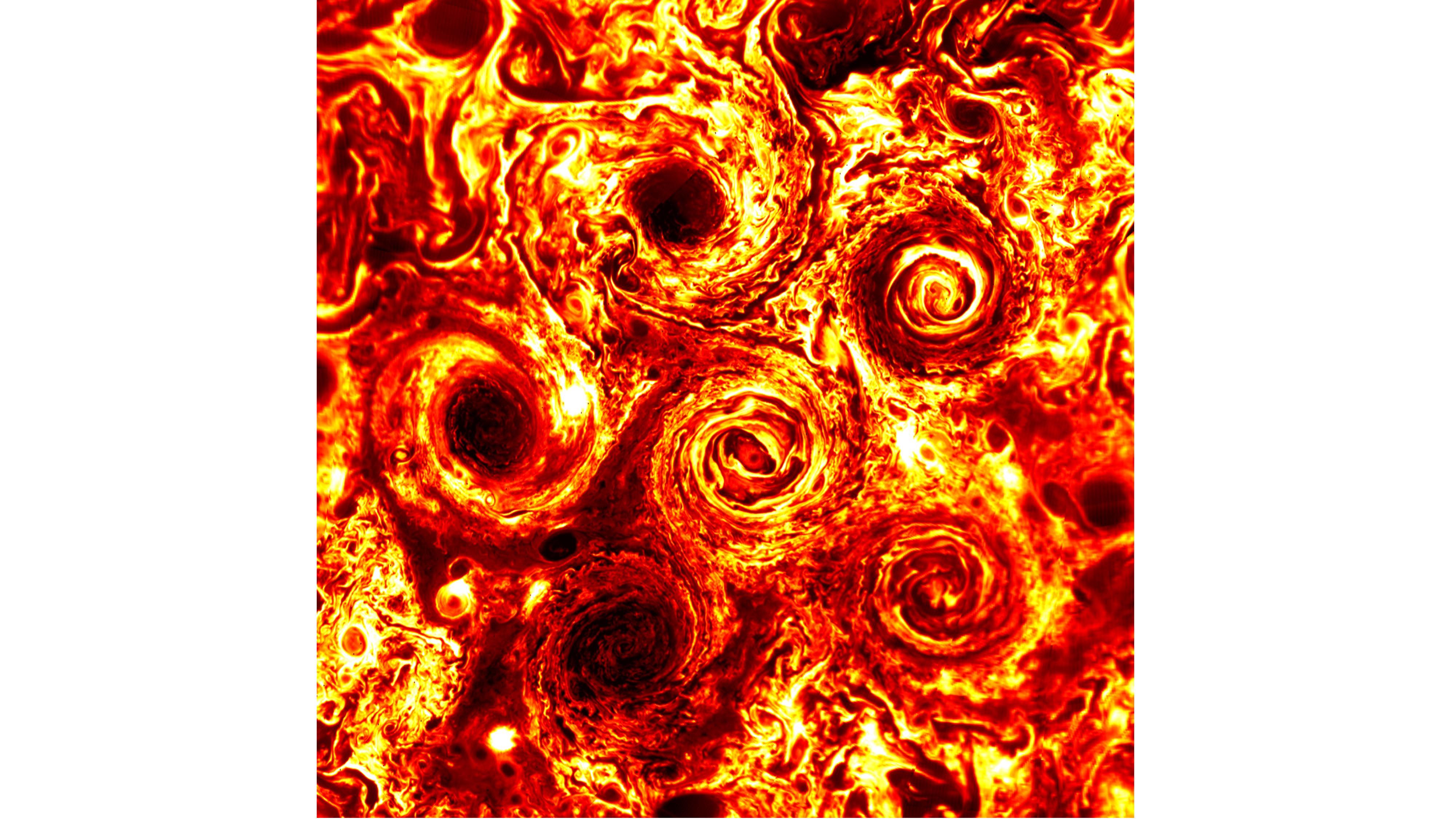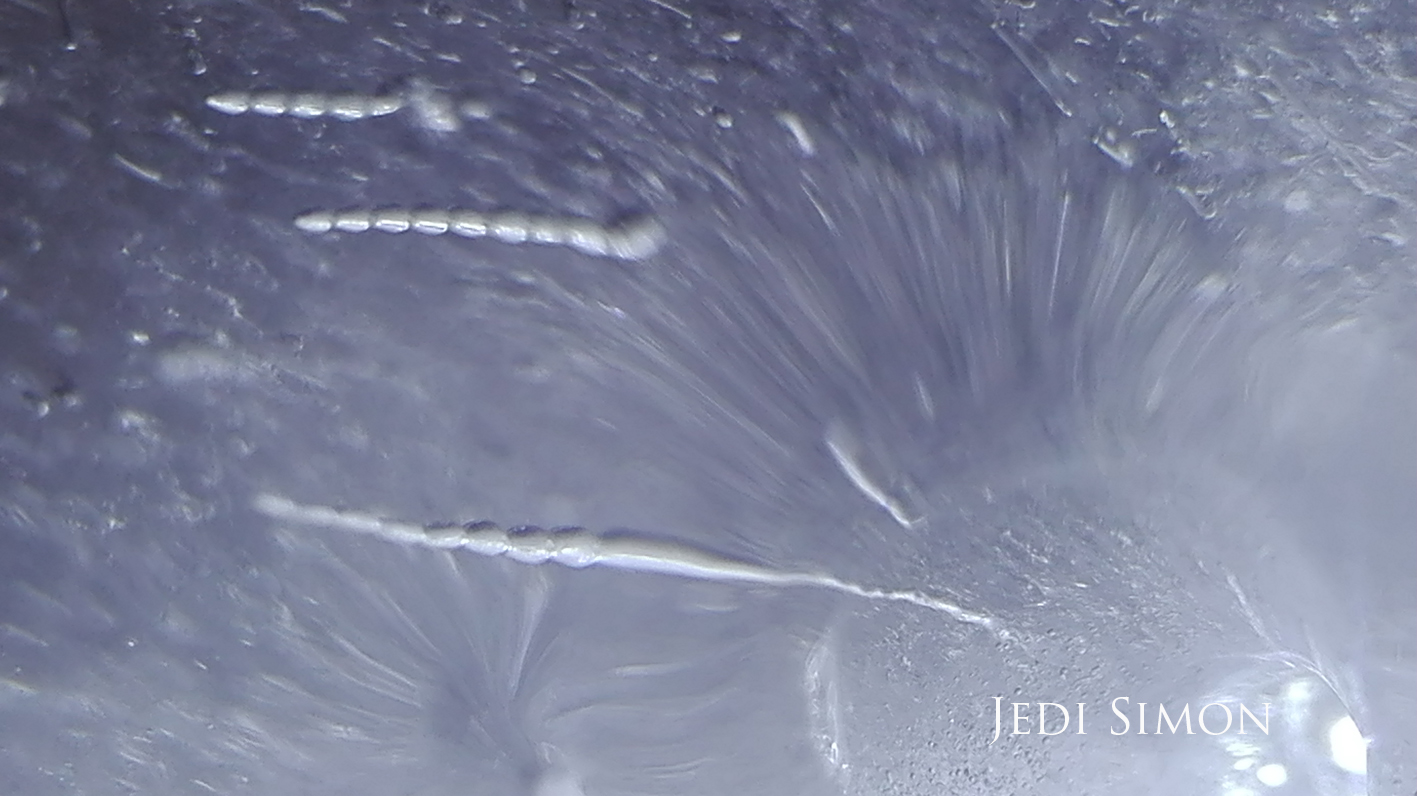
Atomism, Void, Particles, Rays and Fields
Simply, RF could do
. anyhow, matters, in an atomistic
understanding, vibrate. Each atom shall express cyclic spin,
and the models shall follow multiple frequencies, orbits, and ultimately, chords.
So multilayered frequencies at once.
Not only one frequency, considering this attribute, but plenty of them.
Form the point of view of the emanation of the fields, or shockwaves generated
by the atoms, themselves, then.
these fields shall produce frontwave oscillations of compression and rarefaction.
One cycle, is in fact One vibration,
or frequency unit, as soon as You reach the second one ( same position ). The
concept of frequency shall appear
in a spatial understanding, considering the time line. Frequency is an attribute.
So, as atoms need the evident dualism or fundamental principle of atom and void,
and as soon as one atom shall cycle into its original position, or configuration,
or confirm its own existence, this repetition shall be called "its frequency".
Let's go back to the forgotten teachings....
Kalapa or rupa-kalapa (from Sanskrit rūpa "form, phenomenon" and kalāpa
"bundle") is a term in Theravada Buddhist phenomenology for the smallest units
of physical matter, said to be about 1/46,656th the size of a particle of dust
from a wheel of chariot. Kalapas are not mentioned in the earliest Buddhists
texts, such as the Tripitaka, but only in the Abhidhammattha-sangaha, an
Abhidhamma commentary dated to the 11th or 12th century, and as such not part of
common Theravada doctrine.
According to the description found in the Abhidhammattha-sangaha, Kalapas are
said to be invisible under normal circumstances but visible as a result of
meditative samadhi.[3] Kalapas are composed of eight inseparable elements of
material essence in varying amounts which are:[4] Pathavi (earth), Apo (water),
Tejo (fire), Vayo (air), Vanna (color), Gandha (smell), Rasa (taste), and Oja (nutrition).
The first four elements are called primary qualities, and are predominant in
kalapas. The other four are secondary properties that derive from the primaries.
Certain kalapas are said to also include additional elements, including sound,
sex, body, mind-base and life.
In contemporary Buddhist meditation practice, the observation and analysis of
kalapas is a type of vipassana practice that aims to allow direct observation of
impermanence and non-self.
Indian Buddhists, such as Dharmakirti and others, also developed distinctive
theories of atomism, for example, involving momentary (instantaneous) atoms,
that flash in and out of existence (kalapas).
... The Buddhists denied the existence of substantial matter altogether.
Movement consists for them of moments, it is a staccato movement, momentary
flashes of a stream of energy... "Everything is evanescent," ... says the
Buddhist, because there is no stuff ... Both systems [Sānkhya and later Indian
Buddhism] share in common a tendency to push the analysis of Existence up to its
minutest, last elements which are imagined as absolute qualities, or things
possessing only one unique quality. They are called "qualities" (guna-dharma) in
both systems in the sense of absolute qualities, a kind of atomic, or
intra-atomic, energies of which the empirical things are composed. Both systems,
therefore, agree in denying the objective reality of the categories of Substance
and Quality, ... and of the relation of Inference uniting them. There is in
Sānkhya philosophy no separate existence of qualities. What we call quality is
but a particular manifestation of a subtle entity. To every new unit of quality
corresponds a subtle quantum of matter which is called guna "quality", but
represents a subtle substantive entity. The same applies to early Buddhism where
all qualities are substantive ... or, more precisely, dynamic entities, although
they are also called dharmas ("qualities").
Kalapa or rupa-kalapa (from Sanskrit rūpa "form, phenomenon" and kalāpa
"bundle") is a term in Theravada Buddhist phenomenology for the smallest units
of physical matter, said to be about 1/46,656th the size of a particle of dust
from a wheel of chariot
Kalapas are said to be invisible under normal circumstances but visible as a
result of meditative samadhi... Vipassana......
Kalapas are composed of eight inseparable elements of material essence in
varying amounts which are: Pathavi (earth), Apo (water), Tejo (fire), Vayo
(air), Vanna (color), Gandha (smell), Rasa (taste), and Oja (nutrition). The
first four elements are called primary qualities, and are predominant in kalapas.
The other four are secondary properties that derive from the primaries. Certain
kalapas are said to also include additional elements, including sound, sex,
body, mind-base and life.
In contemporary Buddhist meditation practice, the observation and analysis of
kalapas is a type of vipassana practice that aims to allow direct observation of
impermanence and non-self.
2500 years ago.... vision..... Greek Atomism ....
earlier teaching, is the Vedic....
Anything that goes, moves along a path... the one of transient continuity, if we
consider linearity, created by the pulsation, rhythm of your footsteps....
and in 3 dimensionality you shall see 2 spinning systems working as one, in
perfect equilibrium.
in 4 dimensionality you shall see the pulsation, step, speed and velocity / time...
All phenomena exhibit selflessness. However, if one is trying to explain a river
to someone who has only an understanding of droplets, it would not be wrong to
say that the river is many many many droplets together. It would not be right,
though, either.
Kalāpa in the sense you are thinking is used in the commentaries. The word is
generally used in the suttas to mean "bundle", as in yavakalāpa - bundle of
grass, or dhanukalāpa - sheaf of arrows. I can't pinpoint the first usage of the
word to mean "smallest particle of matter", but the Visuddhimagga uses it in
this way:
The Pali here is eka kalāpe - "in a single group". The meaning is that each
instance of matter is made up of a single group of characteristics.
The abhidhammattha-sangaha also uses the term:
Ekuppādā ekanirodhā ekanissayā sahavuttino ekavīsati rūpakalāpā nāma.
There are twenty-one material groups inasmuch as they arise together, cease
together, have a common basis, and occur together.
rūpa-kalāpa
'corporeal group', material unit, designates a combination of several physical
phenomena constituting a temporary unity. Thus, for instance, the so-called
'dead matter' forms the most primitive group, consisting only of 8 physical
phenomena, called the 'pure eightfold unit' or 'octad' (suddhatthakakalāpa), to
wit: the 4 elements (the solid, fluid, heat, motion); colour, smell, taste,
nutriment (pathavī, āpo, tejo, vāyo; vanna, gandha, rasa, ojā).
it is also called ojatthamaka-kalāpa, 'the octad with nutriment as the 8th
factor'.
The simplest form of living matter is the '9-fold vitality unit' or 'life-ennead'
(jīvita-navaka-kalāpa), formed by adding 'vitality' to the octad.
How A Kalapa Is Formed
A group of people association is called a club. In Pali kalapa also means a
group. As said before rupa (matter) cannot exist in isolation. Appropriate units
of matter combine to exist as a group or an aggregate. Such a group with common
properties, existing together, disappearing together, is termed 'one kalapa'.
Matter In Combination
The four fundamental elements - pathavi, tejo and apo - together with vanna (appearance),
ghanda (scent), rasa (taste), oja (essence of nutrition) are the eight classes
of matter found always in coexistence. A lump of soil is an aggregate of eight
classes of matter too. It has a certain appearance and a specific smell and
taste; it can be touched and felt. The same is true for water, wind, fire, heat,
light etc. They are all aggregates of the eight classes of matter.
The Size Of A Kalapa
Each kalapa is so minute that you cannot see it with your naked eye. Even the
finest dust particle is an aggregate of a large number of kalapas. A bacterium,
which can only be seen with the most powerful microscope is composed of
countless kalapas formed by kamma, citta, utu and chara (*ahara). Therefore the
minuteness of a kalapa is beyond description.
.. there are in total 28 paramattha rupa which are all realities and can be
sensed by one of our 60 senses.
Rupa or vanna is sensed by eye only, sadda is sensed by ear only, gandha is
sensed by nose only, rasa is sensed by tongue only and pathavi, tejo, vayo three
of mahabhuta rupa are sensed by body only.
Vanna, gandha, rasa, oja or ahara, pathavi, tejo, vayo and apo always co-exist
and they are called avinibbhoga rupas and other 20 rupas are called vinibbhoga
rupas.
All other rupas that is 5 pasada rupas and 16 sukhuma rupa or subtle materials
are all sensed by mind only; that is 5 pasada rupas and 16 sukhuma rupa can
never be sensed by any of eye, ear, nose, tongue, and body.
There are kamma that can cause kammaja rupas.
These kamma are:
12 akusala (* unskilful ) kamma,
8 kamavacara kusala (* skilful human) kamma, and
5 rupavacara kusala (* skilful Brahma) kamma.
Even though there are 28 paramattha rupas, they do not arise in isolation.
At least some arise together. And they vanish together.
They have to arise on mahabhuta rupas and they co exist in a form called rupa
kalapa.
There are 21 rupa kalapas. 9 kalapas are kammaja rupa kalapas, 6 are cittaja, 4
are utuja and 2 are aharaja rupa kalapas.
Now we can classify kalapas according to their causes
Kammaja rupa kalapas are:
cakkhudassaka,
sotadassaka,
ghanadassaka,
jivhadassaka,
kayadassaka,
ithibhavadassaka,
punbhavadassaka,
vatthudassaka, and
jivitanava kalapa.
In cakkhudassaka kalapa, there are 8 avinibbhoga rupas, jivita rupa and cakkhu
pasada rupa altogether 10 rupas arise together. Other kammaja kalapas are the
same and just to replace cakkhu with their correspondent rupa. Jivitanava kalapa
is a combination of 8 avinibbhoga rupas and jivita rupa itself.
6 cittaja rupa kalapas are:
suddhattha kalapa which comprises 8 avinibbhoga rupas only,
kayavinattinava kalapa which comprises 8 rupas and kayavinatti rupa,
vacivinatti saddadassaka kalapa which is compsed of 8 rupas, vacivinatti and
sadda,
lahutadi ekadassaka kalapa which is combination of 8 rupas and 3 lahutadi rupas,
kayavinatti lahutadi dvadassa kalapa which comprises 8 rupas, 3 lahutadi and
kayavinatti rupa, and
vacivinatti sadda lahutadi terasaka kalapa which includes 8 rupas, 3 lahutadi,
vacivinatti and sadda rupa.
4 utuja kalapas are:
suddhattha kalapa,
saddanava kalapa,
lahutadiekadassaka kalapa which comprises 8 rupas and 3 lahutadi rupas, and
sadda lahutadi dvadassaka kalapa which comprises 8 rupas, 3 lahutadi rupa, and
sadda rupa.
2 aharaja rupa kalapas are:
suddhattha rupa lakapa and
lahutadiekadassaka rupa kalapa which comprises 8 inseparable rupas and 3
lahutadi rupas.
From the 4 utuja rupa kalapas, suddhattha rupa kalapa and saddanava rupa kalapa
can arise outside of beings or sattas. All other rupa kalapas only arise as
ajjattika.
Well in can only get easier when you have read it for about 10 times remembering
the pali names that go along with it.
As Kalapas arise and pass away it does not posses and inherent existence nor an
existing self so in that way it is empty.
All material manifestations produced by the 4 causes of kamma, citta, utu, ahara
are in the form of kalapas. So yes! As there are no material manifestation that
are not produced by these 4 causes.
Cula-suρρata Sutta: The Lesser Discourse on Emptiness
I have heard that on one occasion the Blessed One was staying at Savatthi in the
Eastern Monastery, the palace of Migara's mother. Then in the evening, Ven.
Ananda, coming out of seclusion, went to the Blessed One and, on arrival, having
bowed down to him, sat to one side. As he was sitting there, he said to the
Blessed One: "On one occasion, when the Blessed One was staying among the
Sakyans in a Sakyan town named Nagaraka, there face-to-face with the Blessed
One I heard this, face-to-face I learned this: 'I now remain fully in a
dwelling of emptiness.' Did I hear that correctly, learn it correctly, attend to
it correctly, remember it correctly?"
[The Buddha:] "Yes, Ananda, you heard that correctly, learned it correctly,
attended to it correctly, remembered it correctly. Now, as well as before, I
remain fully in a dwelling of emptiness. Just as this palace of Migara's mother
is empty of elephants, cattle, & mares, empty of gold & silver, empty of
assemblies of women & men, and there is only this non-emptiness the singleness
based on the community of monks; even so, Ananda, a monk not attending to the
perception[1] of village, not attending to the perception of human being
attends to the singleness based on the perception of wilderness. His mind takes
pleasure, finds satisfaction, settles, & indulges in its perception of
wilderness.
"He discerns that 'Whatever disturbances that would exist based on the
perception of village are not present. Whatever disturbances that would exist
based on the perception of human being are not present. There is only this
modicum of disturbance: the singleness based on the perception of wilderness.'
He discerns that 'This mode of perception is empty of the perception of village.
This mode of perception is empty of the perception of human being. There is only
this non-emptiness: the singleness based on the perception of wilderness.' Thus
he regards it as empty of whatever is not there. Whatever remains, he discerns
as present: 'There is this.' And so this, his entry into emptiness, accords with
actuality, is undistorted in meaning, & pure.
The Perception of Earth
"Further, Ananda, the monk not attending to the perception of human being, not
attending to the perception of wilderness attends to the singleness based on
the perception of earth. His mind takes pleasure, finds satisfaction, settles, &
indulges in its perception of earth. Just as a bull's hide is stretched free
from wrinkles with a hundred stakes, even so without attending to all the
ridges & hollows, the river ravines, the tracts of stumps & thorns, the craggy
irregularities of this earth he attends to the singleness based on the
perception of earth. His mind takes pleasure, finds satisfaction, settles, &
indulges in its perception of earth.
"He discerns that 'Whatever disturbances that would exist based on the
perception of human being are not present. Whatever disturbances that would
exist based on the perception of wilderness are not present. There is only this
modicum of disturbance: the singleness based on the perception of earth.' He
discerns that 'This mode of perception is empty of the perception of human being.
This mode of perception is empty of the perception of wilderness. There is only
this non-emptiness: the singleness based on the perception of earth.' Thus he
regards it as empty of whatever is not there. Whatever remains, he discerns as
present: 'There is this.' And so this, his entry into emptiness, accords with
actuality, is undistorted in meaning, & pure.
(The Infinitude of Space)
"Further, Ananda, the monk not attending to the perception of wilderness, not
attending to the perception of earth attends to the singleness based on the
perception of the dimension of the infinitude of space. His mind takes pleasure,
finds satisfaction, settles, & indulges in its perception of the dimension of
the infinitude of space.
"He discerns that 'Whatever disturbances that would exist based on the
perception of wilderness are not present. Whatever disturbances that would exist
based on the perception of earth are not present. There is only this modicum of
disturbance: the singleness based on the perception of the dimension of the
infinitude of space.' He discerns that 'This mode of perception is empty of the
perception of wilderness. This mode of perception is empty of the perception of
earth. There is only this non-emptiness: the singleness based on the perception
of the dimension of the infinitude of space.' Thus he regards it as empty of
whatever is not there. Whatever remains, he discerns as present: 'There is this.'
And so this, his entry into emptiness, accords with actuality, is undistorted in
meaning, & pure.
(The Infinitude of Consciousness)
"Further, Ananda, the monk not attending to the perception of earth, not
attending to the perception of the dimension of the infinitude of space
attends to the singleness based on the perception of the dimension of the
infinitude of consciousness. His mind takes pleasure, finds satisfaction,
settles, & indulges in its perception of the dimension of the infinitude of
consciousness.
"He discerns that 'Whatever disturbances that would exist based on the
perception of earth are not present. Whatever disturbances that would exist
based on the perception of the dimension of the infinitude of space are not
present. There is only this modicum of disturbance: the singleness based on the
perception of the dimension of the infinitude of consciousness.' He discerns
that 'This mode of perception is empty of the perception of earth. This mode of
perception is empty of the perception of the dimension of the infinitude of
space. There is only this non-emptiness: the singleness based on the perception
of the dimension of the infinitude of consciousness.' Thus he regards it as
empty of whatever is not there. Whatever remains, he discerns as present: 'There
is this.' And so this, his entry into emptiness, accords with actuality, is
undistorted in meaning, & pure.
(Nothingness)
"Further, Ananda, the monk not attending to the perception of the dimension of
the infinitude of space, not attending to the perception of the dimension of the
infinitude of consciousness attends to the singleness based on the perception
of the dimension of nothingness. His mind takes pleasure, finds satisfaction,
settles, & indulges in its perception of the dimension of nothingness.
"He discerns that 'Whatever disturbances that would exist based on the
perception of the dimension of the infinitude of space are not present. Whatever
disturbances that would exist based on the perception of the dimension of the
infinitude of consciousness are not present. There is only this modicum of
disturbance: the singleness based on the perception of the dimension of
nothingness.' He discerns that 'This mode of perception is empty of the
perception of the dimension of the infinitude of space. This mode of perception
is empty of the perception of the dimension of the infinitude of consciousness.
There is only this non-emptiness: the singleness based on the perception of the
dimension of nothingness.' Thus he regards it as empty of whatever is not there.
Whatever remains, he discerns as present: 'There is this.' And so this, his
entry into emptiness, accords with actuality, is undistorted in meaning, & pure.
(Neither Perception nor Non-Perception)
"Further, Ananda, the monk not attending to the perception of the dimension of
the infinitude of consciousness, not attending to the perception of the
dimension of nothingness attends to the singleness based on the dimension of
neither perception nor non-perception. His mind takes pleasure, finds
satisfaction, settles, & indulges in the dimension of neither perception nor
non-perception.
"He discerns that 'Whatever disturbances that would exist based on the
perception of the dimension of the infinitude of consciousness are not present.
Whatever disturbances that would exist based on the perception of the dimension
of nothingness are not present. There is only this modicum of disturbance: the
singleness based on the dimension of neither perception nor non-perception.' He
discerns that 'This mode of perception is empty of the perception of the
dimension of the infinitude of consciousness. This mode of perception is empty
of the perception of the dimension of nothingness. There is only this
non-emptiness: the singleness based on the dimension of neither perception nor
non-perception.' Thus he regards it as empty of whatever is not there. Whatever
remains, he discerns as present: 'There is this.' And so this, his entry into
emptiness, accords with actuality, is undistorted in meaning, & pure.
Theme-Less Concentration
"Further, Ananda, the monk not attending to the perception of the dimension of
nothingness, not attending to the perception of the dimension of neither
perception nor non-perception attends to the singleness based on the
theme-less concentration of awareness. His mind takes pleasure, finds
satisfaction, settles, & indulges in its theme-less concentration of awareness.
"He discerns that 'Whatever disturbances that would exist based on the
perception of the dimension of nothingness are not present. Whatever
disturbances that would exist based on the perception of the dimension of
neither perception nor non-perception, are not present. And there is only this
modicum of disturbance: that connected with the six sensory spheres, dependent
on this very body with life as its condition.' He discerns that 'This mode of
perception is empty of the perception of the dimension of nothingness. This mode
of perception is empty of the perception of the dimension of neither perception
nor non-perception. There is only this non-emptiness: that connected with the
six sensory spheres, dependent on this very body with life as its condition.'
Thus he regards it as empty of whatever is not there. Whatever remains, he
discerns as present: 'There is this.' And so this, his entry into emptiness,
accords with actuality, is undistorted in meaning, & pure.
Release
"Further, Ananda, the monk not attending to the perception of the dimension of
nothingness, not attending to the perception of the dimension of neither
perception nor non-perception attends to the singleness based on the
theme-less concentration of awareness. His mind takes pleasure, finds
satisfaction, settles, & indulges in its theme-less concentration of awareness.
"He discerns that 'This theme-less concentration of awareness is fabricated &
mentally fashioned.' And he discerns that 'Whatever is fabricated & mentally
fashioned is inconstant & subject to cessation.' For him thus knowing, thus
seeing the mind is released from the effluent of sensuality, the effluent of
becoming, the effluent of ignorance. With release, there is the knowledge, 'Released.'
He discerns that 'Birth is ended, the holy life fulfilled, the task done. There
is nothing further for this world.'
"He discerns that 'Whatever disturbances that would exist based on the effluent
of sensuality... the effluent of becoming... the effluent of ignorance, are not
present. And there is only this modicum of disturbance: that connected with the
six sensory spheres, dependent on this very body with life as its condition.' He
discerns that 'This mode of perception is empty of the effluent of sensuality...
becoming... ignorance. And there is just this non-emptiness: that connected with
the six sensory spheres, dependent on this very body with life as its condition.'
Thus he regards it as empty of whatever is not there. Whatever remains, he
discerns as present: 'There is this.' And so this, his entry into emptiness,
accords with actuality, is undistorted in meaning, pure superior & unsurpassed.
"Ananda, whatever contemplatives and brahmans who in the past entered & remained
in an emptiness that was pure, superior, & unsurpassed, they all entered &
remained in this very same emptiness that is pure, superior, & unsurpassed.
Whatever contemplatives and brahmans who in the future will enter & remain in an
emptiness that will be pure, superior, & unsurpassed, they all will enter &
remain in this very same emptiness that is pure, superior, & unsurpassed.
Whatever contemplatives and brahmans who at present enter & remain in an
emptiness that is pure, superior, & unsurpassed, they all enter & remain in this
very same emptiness that is pure, superior, & unsurpassed.
"Therefore, Ananda, you should train yourselves: 'We will enter & remain in the
emptiness that is pure, superior, & unsurpassed.'"
"Cula-suρρata Sutta: The Lesser Discourse on Emptiness" (MN 121), translated
from the Pali by Thanissaro Bhikkhu. Access to Insight (BCBS Edition), 30
November 2013,
http://www.accesstoinsight.org/tipitaka/mn/mn.121.than.html .

Written, compiled by Jedi Simon for educational purpose, personal use and study. 08 01 2020
Jupiter
Quantum Cymatics at work
